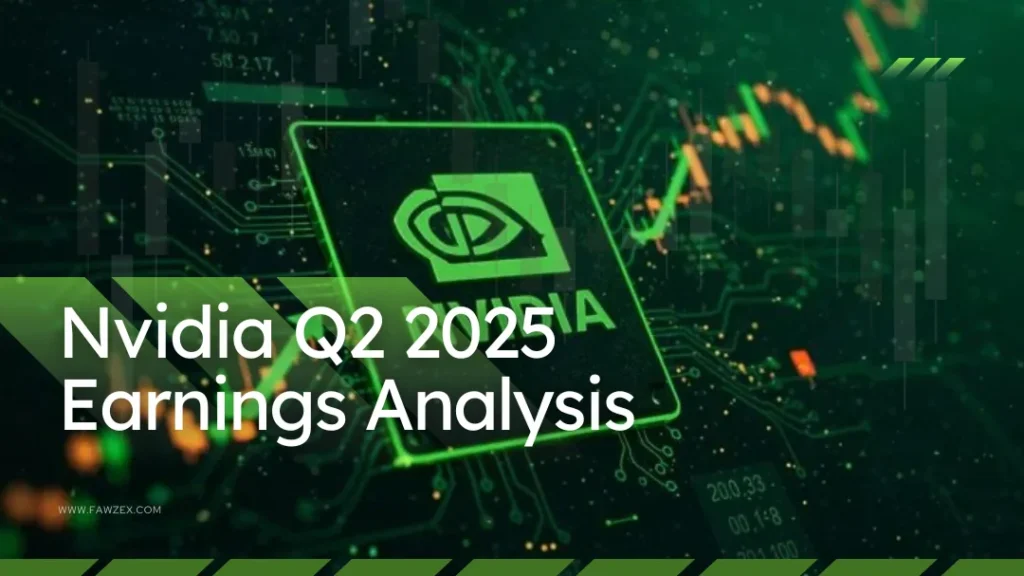Nvidia’s Q2 earnings report is coming up on August 27th, 2025. But this isn’t just about looking at the numbers. We’re going deeper. We’ll use special equity research reports to give you insights you won’t find anywhere else. As of August 18th, Nvidia stock is at $1821. That’s up 31.6% this year. It’s jumped nearly 93% since Liberation Day. It’s important to understand where this AI giant truly stands.
We’ll see how Nvidia compares to its industry and the wider market. We use a simple rating system, from 1 (poor) to 10 (excellent). Keep this in mind as we explore. Nvidia gets an average score of six. This puts it right in line with the market. It ranks second among its competitors, just behind Qualcomm, which scored a seven. This average score comes from looking at earnings, fundamentals, valuation, and risk. We’ll also touch on insider trading, but we’ll skip price momentum for now.
Nvidia Company Overview and Sector Comparison
This section introduces Nvidia. We’ll see how it’s doing now. We’ll also compare it to rivals and the market. We use a special rating system for this.
Current Market Performance
Nvidia’s stock price has been on a tear. It’s up 31.6% this year. Since Liberation Day, it’s gained almost 93%. This shows strong investor interest.
Sector and Market Positioning
Nvidia scores a six overall. This is about average for the market. But it’s second best among its competitors. Only Qualcomm is rated higher. This tells us Nvidia is a strong player in its field.
Nvidia’s Q2 Earnings: Expectations and Analyst Sentiment
Let’s look at what people expect for Nvidia’s Q2 earnings. We’ll also check what experts are saying.
Earnings Per Share (EPS) Projections
For the period ending July 31st, 2025, analysts expect earnings of $0.998 per share. This is a small drop from the previous estimate. It’s still a big jump from Q1 earnings, which were 81 cents per share.
Analyst Recommendations and AI-Driven Growth
Most analysts are recommending “buy” or “strong buy.” This means they believe Nvidia has more room to grow. The AI boom is a big reason for this optimism.
Nvidia’s Stellar Fundamentals: A Deep Dive
Nvidia’s financial health is truly impressive. Let’s break down its strong performance.
Profitability and Debt Management
Nvidia gets a perfect score of 10 for profitability. It also scores a nine for debt. This shows the company is very financially stable.
Earnings Quality and Dividend Payouts
It scores a four for earnings quality. Its dividend score is a perfect 10. These scores give us a good look at how the company makes and uses its money.
Key Financial Metrics Outperformance
Nvidia’s revenue is up 86.2% from last year. Its gross margins are a high 70.5%. Its return on equity (ROE) is a massive 115.5%. The average for chip companies is just 5.2. Nvidia has also beaten industry averages for gross margin and current ratio for five years straight.
Nvidia’s Valuation: The Elephant in the Room
Nvidia’s valuation is its weakest point. It’s considered quite expensive by many.
Valuation Metrics Comparison
Nvidia scores poorly on key valuation metrics. It gets a one for price to sales. Its trailing PE is a three, and forward PE is a two. This makes it look overvalued compared to Qualcomm, Intel, AMD, and Broadcom.
Premium Pricing Against Averages
The stock is priced higher than its own five-year averages. There are small discounts on price-to-sales and trailing PE. However, most other numbers show it’s very expensive. Wall Street seems to agree.
Sector and Market Valuation Premium
Compared to the S&P 500 and the chip sector, Nvidia costs a lot more. Investors are paying a big premium to own its stock.
Risk Assessment and Correlation
Let’s look at the risks involved with investing in Nvidia.
Volatility and Diversification Concerns
Nvidia scores an eight for risk. This reflects its steady returns. However, it’s in almost every major ETF. This means it offers little variety for your investments.
Correlation with Market Indices
Nvidia’s stock moves closely with the S&P 500. It’s 59% correlated over 90 days. Over five years, that correlation is 66%. This means when the market goes up or down, Nvidia often does too.
Trading Day Patterns
Nvidia’s good and bad trading days are about even. You should expect some quick price changes.
Insider Trading Activity
We’ll briefly look at what Nvidia’s insiders are doing.
CEO and Insider Selling Data
CEO Jensen Huang sold about 675,000 shares recently. Insiders have sold over 8.1 million shares in the last six months.
Conclusion
Nvidia’s fundamentals are top-notch. But its valuation is extremely high. The company’s market cap is nearing $4.5 trillion. The big question is: how much higher can it really go?
If you found this breakdown useful, please give it a like. Subscribe to the channel for more. What do you think about Nvidia’s future? Let us know in the comments. Thanks for watching!



